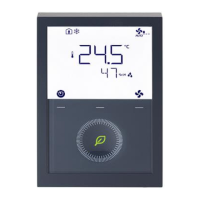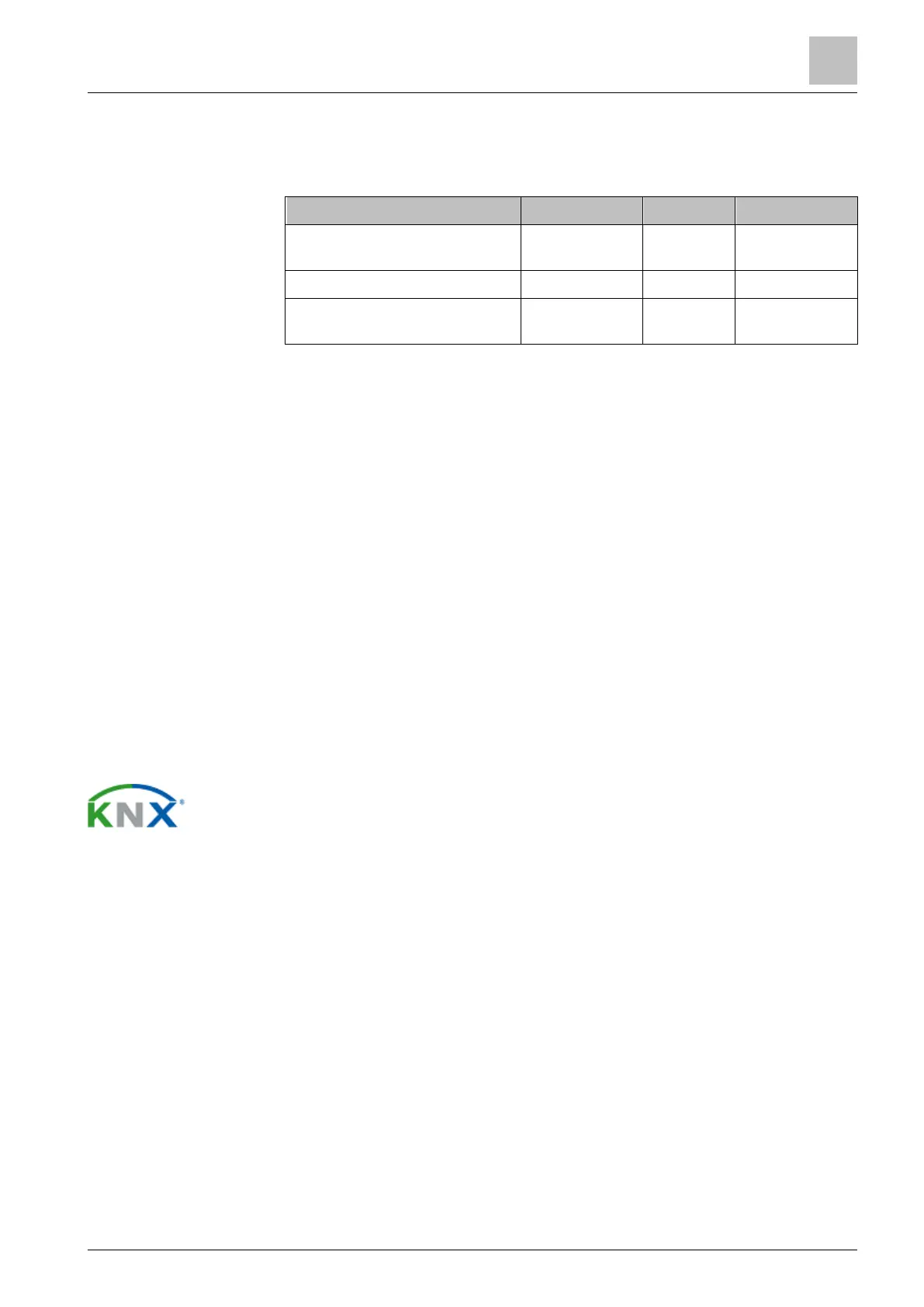* RDG2.. recognizes whether the devices have the heartbeat function. If yes, the
two communication objects are set to the predefined object for a timeout.
Otherwise, it retains the original value (COV) that RDG2.. receives for a timeout.
Individual zones can also be disabled (out of service) via control parameter if they
are not being used. In disabled zones, the LTE signal no longer sends periodically
and therefore reduces bus load.
4.12.8 Startup
The application is restarted after every reset, so that all the connected motorized
valve actuators are synchronized (see Control outputs [➙ 101]).
After a reset, it takes up to 5 minutes for all the connected room thermostats to
restart. This is designed to avoid overloading the mains power supply when
restarting. At the same time, it reduces the load on the KNX network, as not all
thermostats transmit data at the same time. The delay (T
WaitDevice
) is determined by
the thermostat's device address. The device starts to send after the delay.
4.12.9 Heating and cooling demand
Together with Synco, the heating and/or cooling demand from each room is
transmitted to the BACS to provide the required heating or cooling energy.
An example for LTE-Mode is described in Example of heating and cooling demand
zones [➙ 126].
In S-Mode, the current state signals of the control outputs are available.

